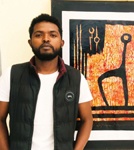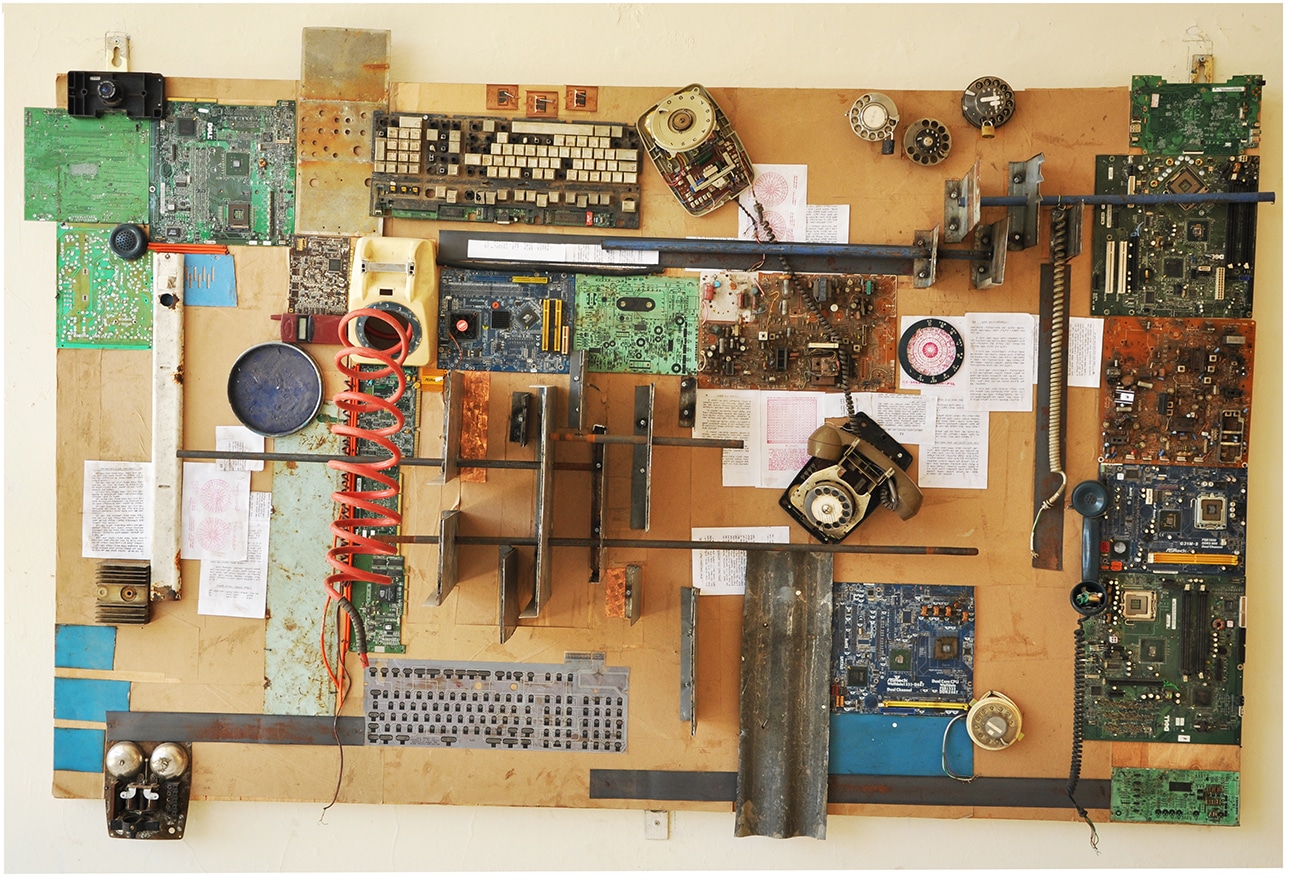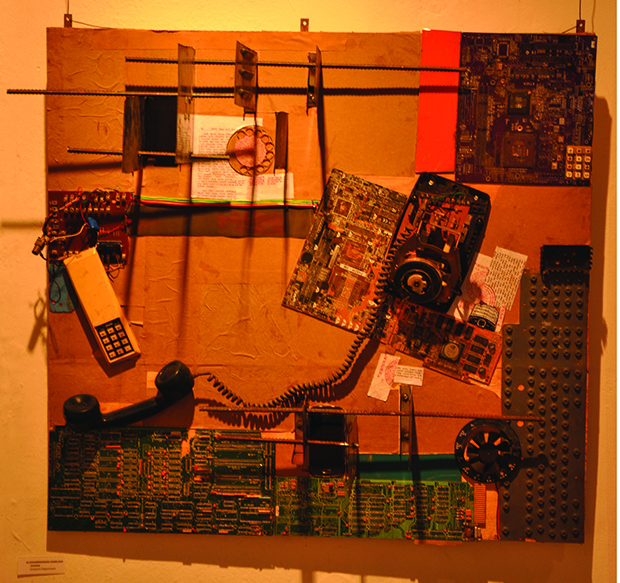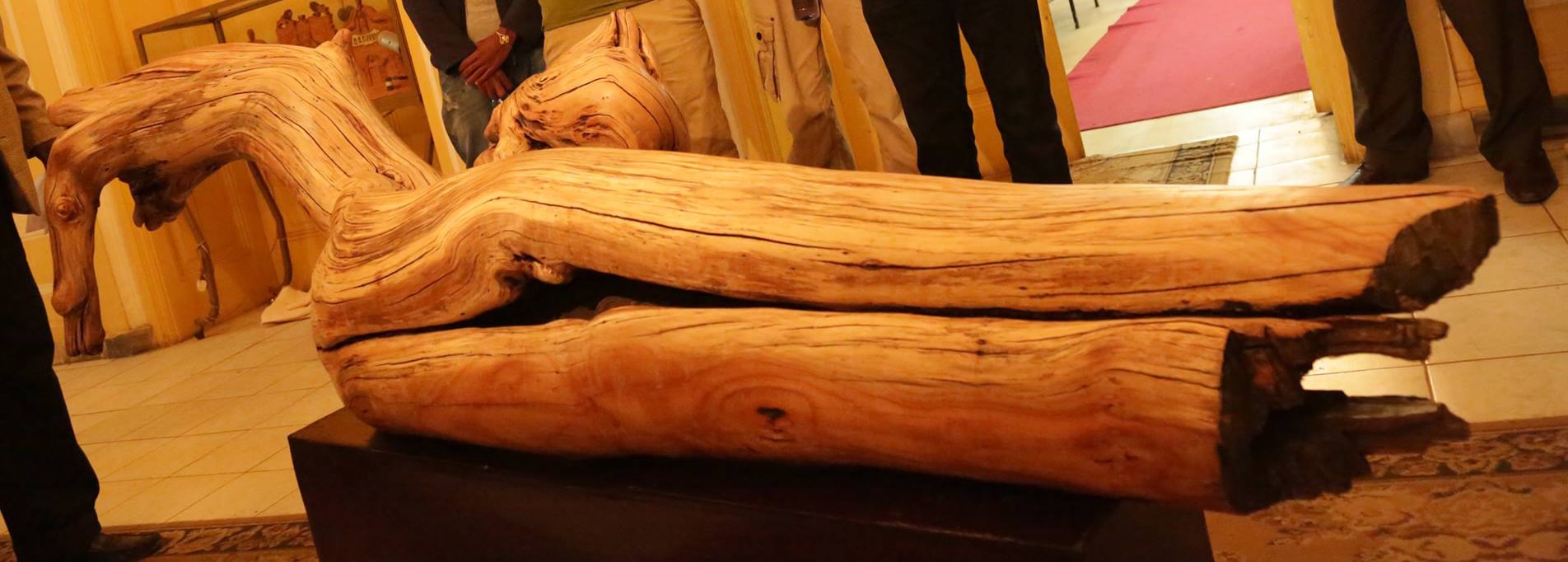Kidanmariam Asmelash was born in Addis Ababa, Ethiopia in the early nineties.
He attended Addis Ababa University ‘Alle School of Fine Arts and Design’, graduating in 2016. Since then he has participated in a number of group exhibitions and workshops such as ‘Alle Fine Art School Gallery’, ‘Alliance Ethio-Francaise’ and ‘Experimental Sculpture’ workshops hosted by Alle School of Fine Arts and Design with Hochschule fur Bildende Kunste, Dresden, Germany.
He understands art to be about expressing and evoking emotions, memories and what is perceived from the world around us. Mixed media installations with collage is his preferred medium of expression. He is also passionate about experimenting with new mediums.
Kidanmariam teaches visual art at Jimma University and is currently studying for a Master’s degree in Fine Art (MFA).

Kidanmariam Asmelash - Mixed Media Visual Artist
AGN: At what point did you realise you had an interest in art?
KA: My interest developed at an early age as a result of amazing works I was exposed to while attending church. Ethiopian orthodox churches typically contain amazing paintings and other artistic works. They proved inspiring to my young mind.
AGN: The painter Zelalem Eshetu is someone who helped nurture your talent during your explorative years as a boy. Back then you spent time assisting him in his studio. To what extent did his work influence yours?
KA: His practice was inspirational in nature rather than contextually or thematically. Gaining awareness of how he worked revealed to me the time, effort, dedication and application required to produce artistic works.

AGN: Are there any other artists that have influenced you and what is it about their work that you are so drawn to?
KA: Associate Professor Bekele Mekonnen of Alle school of fine Arts and Design at Addis Ababa University is someone I can’t speak highly enough of. He typically works with traditional and/or everyday materials through which he expresses himself. Afewerk Tekle also influenced me in the way his abstract style portrays figures. As a boy I used to live in the same vicinity as Afewerk, when gong past his home I would often be captivated by his artistic works that were displayed on the fence of his home.
AGN: What prompted you to drop out of your architectural degree program to study sculpture at art school?
KA: I would say it was more of an emotional rather than rational decision. Quite by chance I decided to visit the art school at my university which was in a different campus. That experience literally changed my life. Subsequently I made the decision to change path but by no means was it an easy decision to make. Apart from my older brother who was partially supportive. Friends and other family members were not encouraging at all but I decided to follow my heart anyway.

AGN: You started off drawing as a boy but went on to study sculpture. When did you discover you had a passion for sculpture and is there a particular medium you prefer to work on?
KA: As a freshman at University I explored different genres of art. Sculpture seemed to provide the greatest challenge and direct contact with the medium and the environment sculptors typically work within are all factors that led to me gravitating towards sculpture. As a freshman I would visit different studios for various artistic disciplines from those of painters to industrial designers and ceramic studios. It was the ceramic studios that had the greatest pull on me.
AGN: You are now a mixed media/multi disciplinary visual artist. Why did the transition to mixed media come about?
KA: It’s all about the concept and how it can be best presented/actualized. My concepts tend to be highly object oriented. It was more a case of what I was imagining pushing me to adopt mixed media rather than me pre-determining that is what I would do. Other artistic styles were more limiting in terms of expressing what I wanted to do.
AGN: Each generation has a voice that may or may not be totally distinct from positions articulated by those gone before. Is there a particular voice or movement you would say can be ascribed to your generation?
KA: I feel my generation is underscoring the message of freedom and unity. We seek to broaden the debate about finding ways to live more harmoniously given the diversity of our population, while learning from the past but not allowing it to divide us.
Reconnection is a body of work I produced that speaks to this. On a personal level I reconnected with my past. Although my father became absent while I was young. My memories of the work he did with phones and the equipment he used left an impression on me. Technology manifests in my work. On a national level, the way different groups inter-related in the past has been fractured. I believe a constructive and holistic reconnection needs to be made.
In some cases new connections need to be made. Narratives that are inclusive will help to build or strengthen relationships between people of different ethnic backgrounds. It is not impossible to find common ground. The country’s victory at the Battle of Adwa 1896, overcoming famine in the 1980’s are examples of things we can look to and draw on to pave the way for engendering a more equitable and collective national consciousness.

AGN: How would you describe the art scene in Ethiopia?
KA: It is really evolving in all sorts of ways. There used to be just one art school in Ethiopia but now there are several. More galleries are opening and hence more exhibitions are taking place. The media is also paying more attention to art than before. Having said all of this, making a living by totally relying on art is next to impossible in Ethiopia.
AGN: Aside from Addis Ababa where else in the country is there an established art scene?
KA: Bahirdar, Mekelle, Gondar and Arbaminch in the south are some of the places I would highlight on the art scene map of my country.
AGN: What impact would you like to make through your art?
KA: I simply wish to create reasonable doubt and questions in the minds of viewers as I feel it is important for people to question themselves, revisit and reflect on long standing/previously held positions. I believe it is invaluable for personal growth.
AGN: What can we expect from you in future?
KA: I am exploring the medium of sound installations and expect to do more in that space in future. I am also exploring the opportunity to do more to internationalize my work. No doubt we shall see where the path leads.
Previous ‘Arts View’ interviews are available here; archive
© 2021 All rights reserved - Ri Iyovwaye on behalf of African Global Networks (AGN) - Jun 2021
